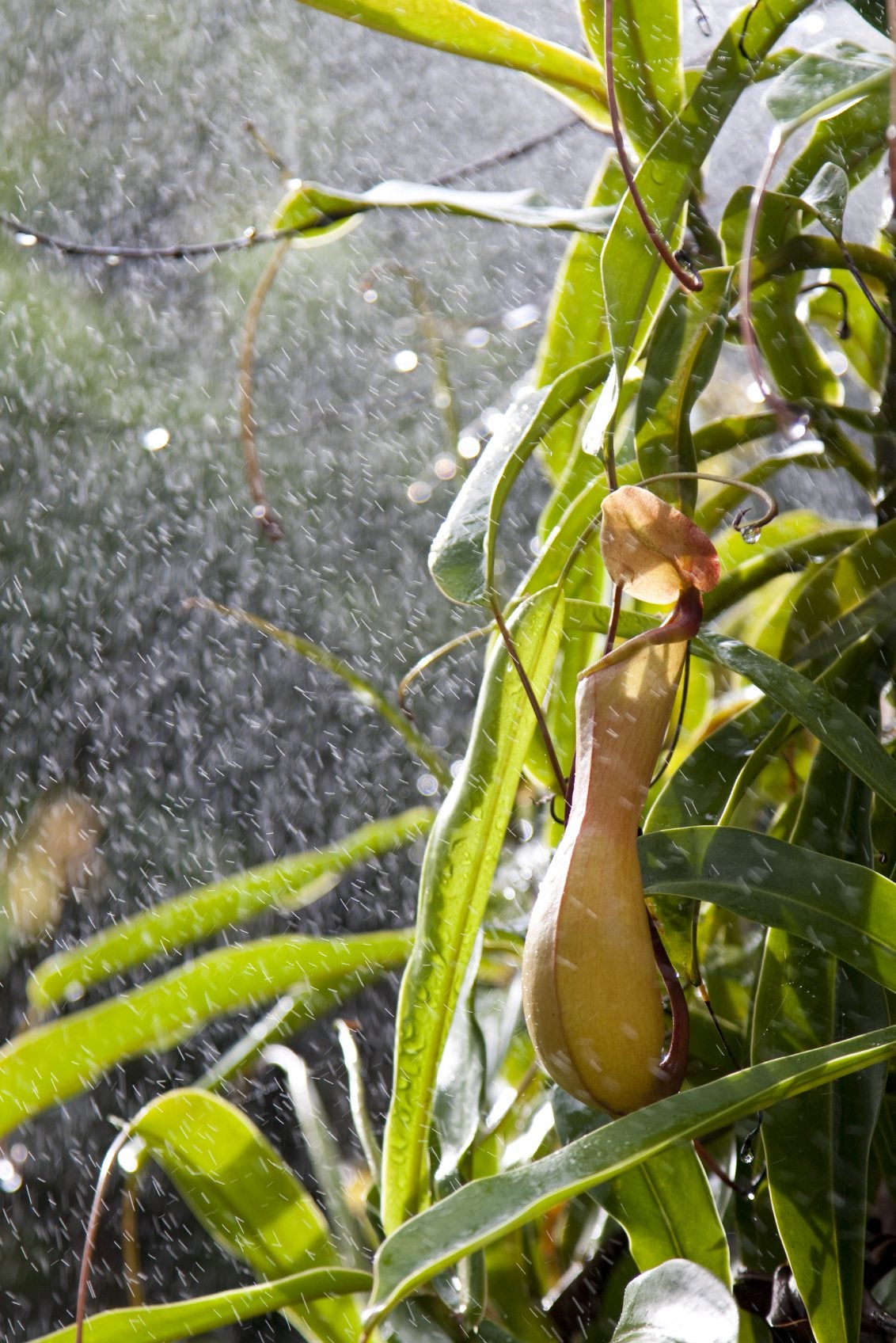Watering Nepenthes – How To Water A Pitcher Plant


Nepenthes (pitcher plants) are fascinating plants that survive by secreting sweet nectar that lures insects to the plant’s cup-like pitchers. Once the unsuspecting insect slides into the slippery pitcher, the plant’s fluids digest the bug in soupy, sticky liquid. There are many types of exotic pitcher plants, all surprisingly easy to grow once you learn how to meet the plant’s basic needs, including proper pitcher plant watering. Read on to learn what’s involved in watering a pitcher plant.
Pitcher Plant Watering
Pitcher plants like humid, boggy environments; this is the main thing to keep in mind when watering nepenthes. Feel the planting medium regularly, and water whenever the surface of the medium begins to feel slightly dry to the touch. The plant is likely to suffer if you allow the potting medium to become completely dry. How to water a pitcher plant? Watering nepenthes is actually very simple and not that different from watering any indoor plant. Just water the plant until moisture drips through the drainage hole, then allow the pot to drain thoroughly. Never let the plant sit in water. Although nepenthes like moist soil, the plants are prone to root rot in soggy, poorly drained planting medium.
Tips on Watering Carnivorous Plants
Although pitcher plants (and other carnivorous plants) tolerate dry air, they frequently stop producing pitchers when the humidity drops below 50 percent. If the environment is dry, mist regularly or place the plant near a room humidifier. Placing the plant in a group with other plants also helps increase humidity around the plants. You can also increase humidity by placing the plant on a tray or plate with a layer of wet pebbles or gravel. Keep the pebbles consistently wet, but always keep the bottom of the pot above the water line. A terrarium is another option for pitcher plants in dry rooms. However, most pitcher plants do just fine in a less controlled environment. Use filtered, distilled water or rainwater instead of tap water. If you use hard water from the tap, water deeply with distilled water every two to three weeks to flush minerals from the soil. Avoid air-conditioned rooms, which tend to be much too dry for pitcher plants.
Sign up for the Gardening Know How newsletter today and receive a free copy of our e-book "How to Grow Delicious Tomatoes".

A Credentialed Garden Writer, Mary H. Dyer was with Gardening Know How in the very beginning, publishing articles as early as 2007.